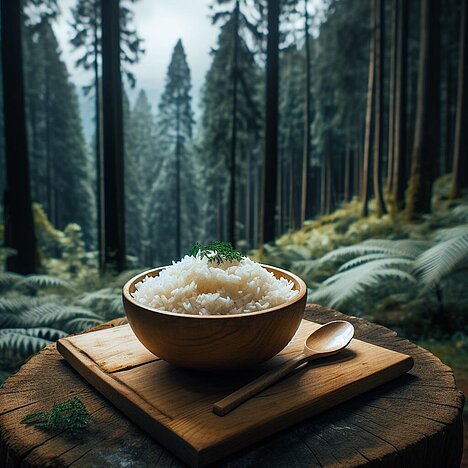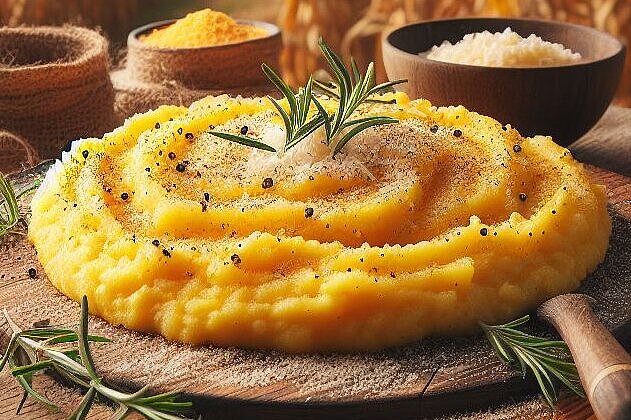Rice

Rice is a popular food that can be found in many cuisines around the world. But is rice also suitable for dogs? In this article, you'll find out what rice is, what advantages and disadvantages it has for your dog and how to prepare it correctly.
What is rice?
Rice is a grain obtained from the seeds of the rice plant. There are many different types of rice, which differ in shape, color, taste and nutritional value. The best known are white rice, brown rice and basmati rice.
Rice is rich in carbohydrates, which provide your dog with energy. It also contains proteins, vitamins, minerals and fiber. Rice is gluten-free and therefore suitable for dogs with a gluten intolerance.
What are the benefits of rice for dogs?
Rice can help your dog in various situations. For example:
- If your dog has diarrhea, rice can help to firm up the stool and compensate for fluid loss. You can offer your dog cooked white rice with some chicken broth or water.
- If your dog is allergic to other grains, rice can be a good alternative. You can give your dog special dog food with rice or cook your own rice with meat and vegetables.
- If your dog is overweight, rice can help to reduce the weight. Rice has fewer calories than other cereals and is very filling. You can reduce the amount of normal food and replace it with cooked brown rice.
What are the disadvantages of rice for dogs?
Rice is not suitable for every dog. For example:
- If your dog has diabetes, rice can raise blood sugar levels. White rice has a high glycemic index, which means that it is digested quickly and causes blood sugar to rise rapidly. Brown rice has a lower glycemic index, but it too should only be fed in moderation.
- If your dog has kidney problems, rice can increase phosphorus levels in the blood. Phosphorus is a mineral that is important for bones, but too much can put a strain on the kidneys. Rice contains more phosphorus than other cereals.
- If your dog cannot tolerate grains, rice can cause digestive problems. Some dogs have a grain intolerance or allergy, which can manifest itself as bloating, diarrhea or itching. In this case, you should not feed your dog any grains, including rice.
How do I prepare rice for my dog?
If you want to feed your dog rice, there are a few things you should bear in mind:
- Always cook the rice thoroughly. Raw or undercooked rice can contain bacteria or be difficult to digest.
- Only use water or unsalted broth for cooking. Salt or spices can harm your dog or not taste good.
- Always mix the rice with something else. Feeding only rice is not balanced and can lead to deficiency symptoms. Always give your dog some meat or vegetables.
- Only feed rice in moderation. Too much rice can lead to obesity or nutrient deficiencies. Stick to the recommended amount of food for your dog and adjust it if necessary.
Rice is a grain obtained from the seeds of the rice plant and is available in different varieties such as white, brown and basmati rice. It contains carbohydrates, proteins, vitamins, minerals and fiber and is gluten-free. Rice can help dogs in various situations, such as diarrhea, allergies to other grains or for weight loss. However, there are also disadvantages, such as the potential increase in blood sugar levels in dogs with diabetes or the possibility of increasing phosphorus levels in dogs with kidney problems. Rice should be avoided in dogs with grain intolerances. When preparing rice, it should be cooked thoroughly, prepared with unsalted broth or water and mixed with other foods such as meat or vegetables. The amount should be fed in moderation to avoid obesity or nutritional deficiencies.
Properties 16
Are you looking for other ingredients with a specific property?
Just click on them to find more.
If you notice any signs of hypersensitivity or poisoning in your dog, you should see your vet immediately. We are not a substitute for a vet, but we try to be as accurate as possible. Every dog reacts differently and we recommend you get a second opinion or consult your vet if in doubt.
Stay healthy and take good care of your four-legged friend!😊
Similar to Rice
Quinoa is a plant from the foxtail family that grows in the Andes. The seeds of the plant are known as quinoa and are similar in shape and consistency to rice or couscous. Quinoa is gluten-free and...
Couscous is a cereal product made from durum wheat semolina. The semolina is mixed with water and salt and formed into small balls, which are then dried. To prepare couscous, simply soak it in...
Bulgur is a cereal product made from durum wheat semolina. To make bulgur, the semolina is soaked, cooked with steam, dried again and the husks removed. The remaining grains are then coarsely or...
Polenta is a corn product made from the finely ground endosperm of the corn kernel. It is rich in carbohydrates, fiber, vitamins and minerals. Among other things, polenta contains vitamin A, B...



